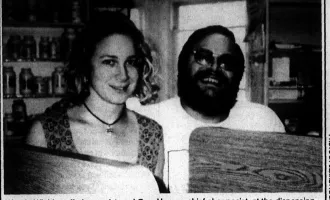Many Career Paths for PhDs
All major scientific journals are now covering the shortage of academic positions and funding for trained scientists, and many key university decision makers acknowledge that we are in a period of funding stagnation. As such, I find it necessary to engage in the ever-evolving and active discussion about career possibilities and opportunities for PhD graduates. The dire research-funding situation may take decades, according to a UCSF panel discussion on “Thinking creatively about postdocs.”
At this panel discussion, administrators emphasized educating graduate students and postdocs about the possibilities of careers outside of academia early enough during their training so that graduate students do not default into the postdoc path, but instead make a well-thought-out and informed choice. So what happens to those of us who have already passed through the pipeline and are now at the intersection of making more serious career decisions?
Where do we go from here?
In the search for alternatives to academia as a third-year postdoc, I have embarked on a mission to find out what is really out there for a PhD graduate. To do this, I am lucky to have my affiliation with UCSF, where we have organizations that bring in speakers who have pursued a variety of other paths. One of the most engaging events I’ve attended was held by Curium, an organization aimed at helping bridge the gap for grad students and postdocs.
The event focused on startups and highlighted a panel of entrepreneurs who had successfully transitioned from academia into entrepreneurship and started their own science-based companies. The panel of entrepreneurs shared their stories about building life science startups and making the transition. Of course, building a biotech startup as part of the founding team is not simple, but the challenges are not too dissimilar to designing, carrying out, and fine tuning experiments in academia -- concentration, hard work, patience and resilience are all definitely transferable skills on this path.
The most important lesson I learned is that it is very important to deeply consider your own strengths and weaknesses, to think long and hard about not just what you can do, but what you are passionate about. By that, I mean the kind of work that infuses you with energy, excitement, and inspiration, the sort that you’d gladly give up nights and weekends for. To this end, I made a chart (see image), considering all the possibilities I’ve come across and I hope it can be useful to you and others in a similar position.
Each box represents a major/general career field one might consider and the various interpretations of it across different sectors. My goal was not to forsake my training, but to find a new use for my existing skill set, to paint a wide landscape and allow me to then self-select based on my passions. I’m sure there are other paths I’ve not considered, so please suggest other opportunities for PhDs in the comments.
Ultimately, I feel that everything we’ve been told about following our passions is true. Happiness comes from following your heart, and the notion that academia is the only worthwhile path for PhDs is foolish. There are so many skills that a PhD can easily pick up to enhance their marketability, in academia and beyond. If you are in a similar situation, there are a variety of great resources you can utilize regarding Biotech/Pharma job market trends from Ernst and Young called “Global Biotechnology Reports.” The book on “Careers in Biotechnology and Drug Development” (Freedman) is also good, and I’d recommend the Massachusetts Biotechnology Council (www.massbioed.com) and Biospace.com as well.
1 ‘Thinking creatively about postdocs’, Roundtable discussion with Gregory Petsko and Keith Yamamoto mediated by Elizabeth Watkins and Bruce Alberts, October 2014, UCSF Mission Bay.
2 ‘Academic to Entrepreneur: A road map for success’, panel members: Caleb Bell, Shawn Carbonell, Ethan Perlstein, Colleen Cutcliffe, Stephen Cary, Kelly Gardner, and Ben Wang. October 2014, UCSF Mission Bay.


